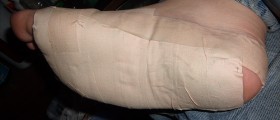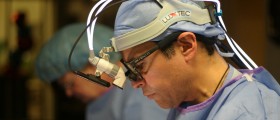
Plantar fasciitis is a very painful inflammation of the plantar fascia, a specific fibrous structure in the foot. The pain caused by plantar fasciitis is located on the underside of the heel and is most intensive during the first steps of the day. One more characteristic of plantar fasciitis is a difficulty connected to bending the foot.
Plantar fasciitis surgery is performed in patients suffering from a severe case of plantar fasciitis and those with plantar fascia rupture. The surgery is the only treatment modality that can correct serious damage caused to the plantar fascia.
Plantar Fasciitis Surgery
This type of surgery is not routinely performed in all patients. It is done in approximately 5% of all patients suffering from plantar fasciitis. Even though the surgery is highly successful and carries little risk certain complications are also possible.
The surgery is considered only after all the conservative approaches for plantar fasciitis have failed to provide with desirable results. The condition is most commonly treated with orthotic shoe inserts. Furthermore, patients may be prescribed medications such as non-steroidal anti-inflammatory drugs as well as night splints. The pain can be alleviated with corticosteroid injections and extracorporeal shock therapy. However, in case none of the previously mentioned succeeds to relieve the pain one undergoes surgical repair.
Prior the surgery the doctor estimates the severity of the condition. In case the condition lasts 9-12 months a patient is a perfect candidate for the procedure. It is also essential to estimate the risks and compare them with benefits. After that a person undergoes thorough physical examination and certain tests and is ready to be operated.
Plantar fascia release surgery is usually an open surgery. During the procedure the surgeon cuts parts of the fascia and reduces tension. The incision is made around the heal pad. One more benefit of the surgery is that it allows removal of a heel spur if it is accidentally found during the surgery. The surgery can be also performed as endoscopic when the fascia is treated with instruments that are inserted through small incisions.
What are Complications Associated with Plantar Fasciitis Surgery?
One of the potential complications of the surgery is the reduction of the arch of the heel. This complications occur if the plantar fascia is released too much. Furthermore, patients may complain about numbness of certain areas of the foot. Numbness is connected to the damage to the nerves around the plantar fascia. Infection is one more potential complication of plantar fasciitis surgery. And finally, definitely one of the most disappointing things is that the patient may come out of surgery feeling the same symptoms as they did prior the surgery.

















Your thoughts on this
Loading...